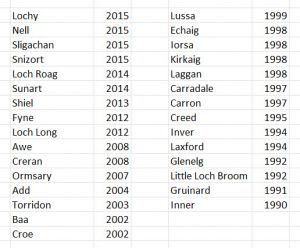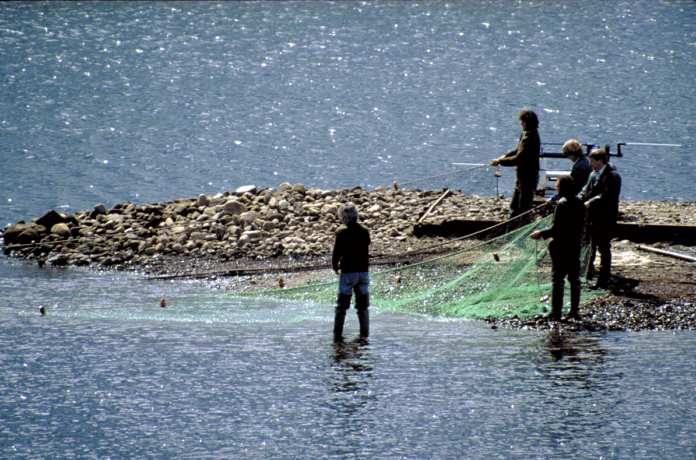As salmon stocks plummet along Scotland’s west coast, the wild fish sector has been quick to point fingers at the salmon farming industry. However, new research reveals that commercial netting, often overlooked in the debate, played a significant role in the decline of salmon and grilse numbers.
Salmon farming is the go-to scapegoat for all that is wrong on Scotland’s west coast. The wild fish sector almost exclusively blame salmon farming for the massive decline of wild fish numbers, although some now grudgingly accept that there may be other reasons why salmon stocks have collapsed (not that they are making any effort to find out why – they are mostly busy working out how to catch more fish).
As part of the Scottish Environment Protection Agency (SEPA) consultation, which is now coming to an end, I have been looking at some of the other factors that might have affected the size of the west coast stock and I discovered something really surprising: Commercial netting did not come to an end on the west coast until 2015.
I have now analysed the full dataset and have been astonished by the results. Since 1952, when records began, a total of 1,085,346 salmon and grilse have been caught and killed by nets on the west coast. Since 1982 (which is when I label the beginnings of a commercial salmon farming industry) a total of 245,800 adult salmon and grilse have been killed by the nets. I can only wonder why the wild fish sector still blame salmon farming for the declines!

Interestingly, in 2011, the then Scottish Salmon Producers’ Organisation (SSPO) issued a chart showing that the decline in salmon stocks on the west coast mirrored that of the east coast, when all exploitation was included. However, the wild fish sector criticised this comparison saying the exploitation by nets was different to exploitation by rods, although a fish is dead whether killed by netsmen or anglers. Their reasoning was that anglers continue to fish even when they catch nothing.
By ignoring netting, except to complain that netting should be banned because the nets were killing the same fish that anglers wanted to catch and kill, the wild fish sector has simply chosen to ignore the huge loss of fish to what are often small spate rivers with a limited size of breeding stock.
What is surprising is some of the fishery districts that saw the last closures of netting stations. Three districts saw the end of netting in 2015. These were the Lochy near Fort William, the Nell, south of Oban and Sligachan, down the east coast of Skye. Even more surprising is that netting of the Sunart fishery district ended as late as 2014. One particularly vocal critic of the salmon farming industry often mentions the river Strontian saying that its fish stocks have been wiped out by the presence of salmon farming. Given that there are no major salmon rivers in the Sunart fishery district, the loss of over 6,000 salmon and grilse must be highly significant.

Another area of netting that is of interest is the Torridon fishery district which closed in 2003. The Torridon system is where the Scottish Government established a field station in the 1990s to investigate the decline of sea trout, although it is clear that the research programme was aimed at looking at the impact of sea lice. The fact that the nets had taken over two and half thousand sea trout and were still in operation when the field station was established seems to have passed the researchers by. Over the same time period, over 30,000 salmon and grilse had been taken. This is huge when compared to the rod catch, which has been numbered in the tens and for many of the years, there has been no catch at all.
Netting is now history except for a small amount of net and coble fishing on the east coast. There is nothing that can be done to change what happened in the past, but if the wild fish sector want to look to the future, they cannot continue to blame those who are still there, for what others did in the times before them.
Dr. Martin Jaffa is one of the founders of Callander McDowell, a consultancy that specializes in aquaculture and fisheries. He holds a Ph.D. in fish physiology and biochemistry.



